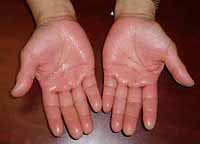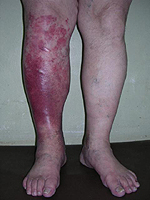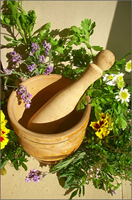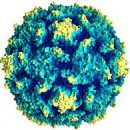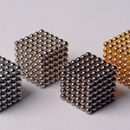What kind of symptoms recognize nodal erythym? What are the reasons for this ailment? Answers to these questions you will learn from this article.
Content
Noded erythema and its causes
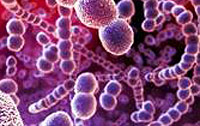 Erythema nodal - this is inflammation of the skin and located under it fabric (fat cells), as a result of which red painful nodules formed by cherry sizes to orange.
Erythema nodal - this is inflammation of the skin and located under it fabric (fat cells), as a result of which red painful nodules formed by cherry sizes to orange.
Erythema nodes can develop at any age, but the greatest incidence is observed among young people. Women are sick more often. In children under the age of 6 years, nodal erythema rarely occurs.
The disease lasts within 6-12 weeks. The re-occurrence of erythema is usually connected with streptococcal infection, pregnancy, admission of oral contraceptives.
Journal erythema can be an independent disease. In this case, establish the reason for its occurrence. However, another situation is possible when the erythema narrowed is one of the symptoms of another disease. The following reasons include the following:
- Reception of some drugs;
- suffered infectious diseases;
- autoimmune diseases;
- chronic inflammatory diseases;
- tumor diseases;
- Sarcoidosis (the disease affecting, mostly lungs).
Currently, sarcoidosis is the leading cause of noded erythema in many countries of the world, including in Russia.
For nodular erythema, the occurrence of painful seals, warm to the touch of nodules 1-3 cm in diameter. Nodules usually raised above the skin. The total number of their number can reach 50 pieces. Most often, the nodule is symmetrically located on the front surface of the legs, but they can occur on caviar, hips, buttocks and arms. On the outer surface of the hands, the face and neck of the rash are less common and usually smaller.
At the beginning of the disease, the nodules have a bright red color, which is subsequently replaced by purple and further on brown different shades.
Usually rashes are saved for 5-10 days. Then within 3-6 weeks gradually pass.
Sometimes the appearance of nodules is accompanied by an increase in body temperature, general malaise, joints in joints (more often knee) and eye inflammation (conjunctivitis).
According to the degree of severity and the flow of the inflammatory process, three types of nodular erythema.
In case of acute, dense bright red ethylene painful nodes from the pea size to the walnut on the symmetric surfaces of the legs and stop, less often - hip and forearm. The nodes are slightly towering above the skin, do not have clear boundaries, never merge with each other. After 3-6 weeks, the rashes disappear without the formation of scars and, as a rule, no longer appear.
Migrating nodular erythema usually begins with the appearance of a single flat knot on the front side of the lower leg. The disease can last from a few weeks to several months.
Chronic nodal erythema develops more often in middle and elderly women. The nodes appear mainly on the front surface of the shins. At the beginning of the disease, they can only be determined when taking. Exacerbations happen, as a rule, in autumn and spring. At the same time, some nodes are absorbed, and others appear to replace them.
Treatment of nodular erythema is carried out by a dermatologist and therapist outpatient or in hospital, depending on the severity of the disease.
Prevention lies in the timely treatment of the underlying disease that promotes the development of nodular erythema.



